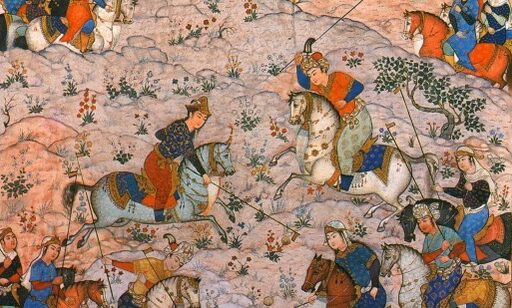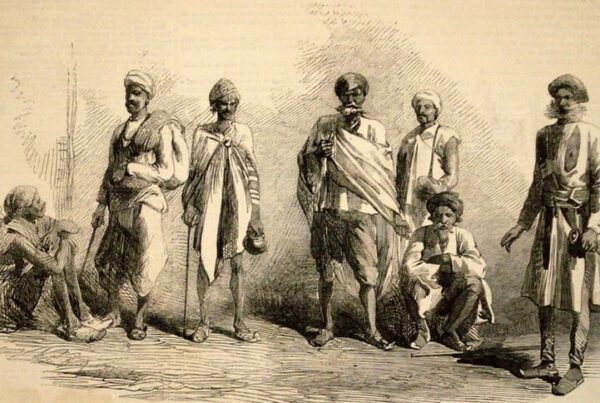By Iftikhar Ahmad
The district of Chitral, now divided into two districts; Upper and Lower Chitral was for much of its history a kingdom and later a princely state, ruled by the Mehtar (King) just like the neighbouring princely state of Swat was ruled by the Khan. These Mehtars who ruled Chitral till 1968 belonged to different families. Often, new adventurers could come from outside of Chitral and defeat the pre-existing rulers and so become the new Mehtars. Thus, the story narrated today goes back to the 17th century and it is the story of a King and the resolve of an old mother who acted to take revenge from this king.The stories we hear in Chitral are saved in the form of Poetry and mouth-to-mouth storytelling but in this age, the later method has diminished due to technological advancement and the misuse of technology however the same technology has helped us to preserve the stories which are transferred through the language of music.
Begal and the Mehtar
The story narrates revolves around a historical event in Chitral during the 17th century, probably in the 1620s CE, involving a legendary rivalry between two of Chitral’s most exemplary polo players – a man from the average classes of the valleys named Jalal Begal and the ruling head of the country: the Mehtar of Chitral.According to Hidayat Ur Reman, a well-known researcher, and historian, the Mehtar of Chitral mentioned in the tale belonged to the Raess dynasty and was frequently defeated by Jalal Begal in polo matches. Frustrated by his continuous losses and dents on his prestige, the Mehtar announced that if he were defeated again he would punish his court members. The court decided that the best way to prevent this would be to kill Jalal Begal in his room while he was sleeping.
Regardless of the exact manner of his death, the next day, Jalal Begal’s mother discovered her son’s lifeless body in his room. But most surprisingly instead of descending into a torrent of madness and mourning or seeking help to bury her son, she dressed herself in the polo attire of her deceased son and prepared his horse for the match. With a face completely covered and complete anonymity maintained, she joined the team on the polo ground.
The Mother of Begal and the Polo Match
When Mehtar and his team saw Jalal Begal on the ground they were astonished as they believed they had successfully eliminated him. The match began, and Jalal Begal’s mother, playing the role of her deceased son, displayed an exceptional performance. Unaware of her true identity, the opposing team considered it to be Jalal Begal’s best performance to date. As a result, Jalal Begal’s team emerged victorious once again. It was only after the match that she revealed her true identity by uncovering her face and leaving the ground recited the following verses;
Behold the ruthless Mehtar’s ruthlessness, o mother’s Begal
Behold my pierced and bruised heart, o mother’s Begal
(Metar o be rakhmi o lolay nan o Baigal
Zakhmi ma hardi o lolay nano Baigal)
Why should the Mehtar (King) get you murdered, while even an old woman can hit the wooden ball
(Ya Mehtar ta ko maritai nan o Begal
Plinjo diko waw d betai nan o Begal)
Whoever has killed you, o mother’s Begal, may his son be killed and mourning never cease in his house
(Ta marako xav briyar ae nan o Begal
Shol te duri mo cheyar ae nan o Begal)
They would hit the ball forward and get goals scored on the other side, who would play the game like you used to play, o mother’s Begal
(Warza diti ponga hal ae nano Begal
Ka koroi ta ghona ghalae nan o Begal)
Historical validity of the Tale
This is a story but it is believed to not be complete fiction because of how some historical shreds of evidence and the song itself are interrelated. The evidence shows that this has happened in the Shogor region which was a stony place at that time and is also narrated by Begal’s mother;
Shogor is a stony place, o mother’s Begal, you will stumble over, o mother’s Begal
Shogor bo langa zaga ae nana o Begal,
Ta pong bokhta shekhi doi ae nan o Begal
It is also evident that Begal is a name of a specific community Begal who to this date are present in the Shogor region.
Elements of Female Resistance
The story highlights the theme of resistance by females in a challenging and patriarchal environment. It depicts a mother’s determination to carry on her son’s legacy and defy the oppressive rule of the Mehtar and his court.The mother’s decision to dress up as her deceased son and participate in the polo match demonstrates her strength and resilience. Despite her grief, she refuses to let her son’s death go unanswered and takes it upon herself to continue his fight against Mehtar. In a society where women were often relegated to domestic roles and expected to be submissive, the mother’s actions disrupt traditional gender norms.
By assuming her son’s identity and excelling in a male-dominated sport, she challenges societal expectations and redefines notions of femininity. By outsmarting Mehtar and his court/team, the mother challenges their authority and exposes their vulnerability. Her success in the polo match exposes the oppressive ruler’s failure and undermines his control over the people. In this way, the story highlights how acts of resistance by women can disrupt and subvert existing power structures.
Conclusion
The mother showed the throne that if the time comes an old woman will overthrow your kingdom, it’s a message to all the tyrants that one day all the fake Gods will be demolished to the ground as said by Faiz Ahamad Faiz “When from the realm of God’s command, All idols will be removed, We, the faithful, rejected and persecuted, Will be seated on the throne, All crowns will be raised, All thrones will be toppled. WE SHALL SEE”




